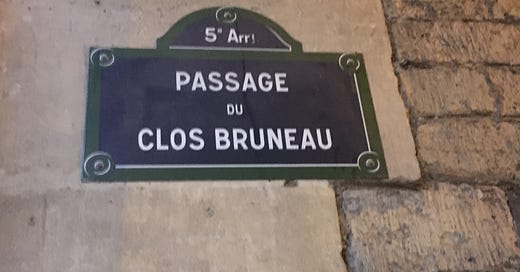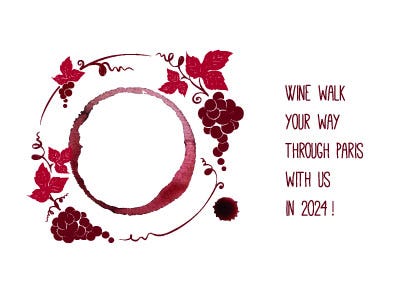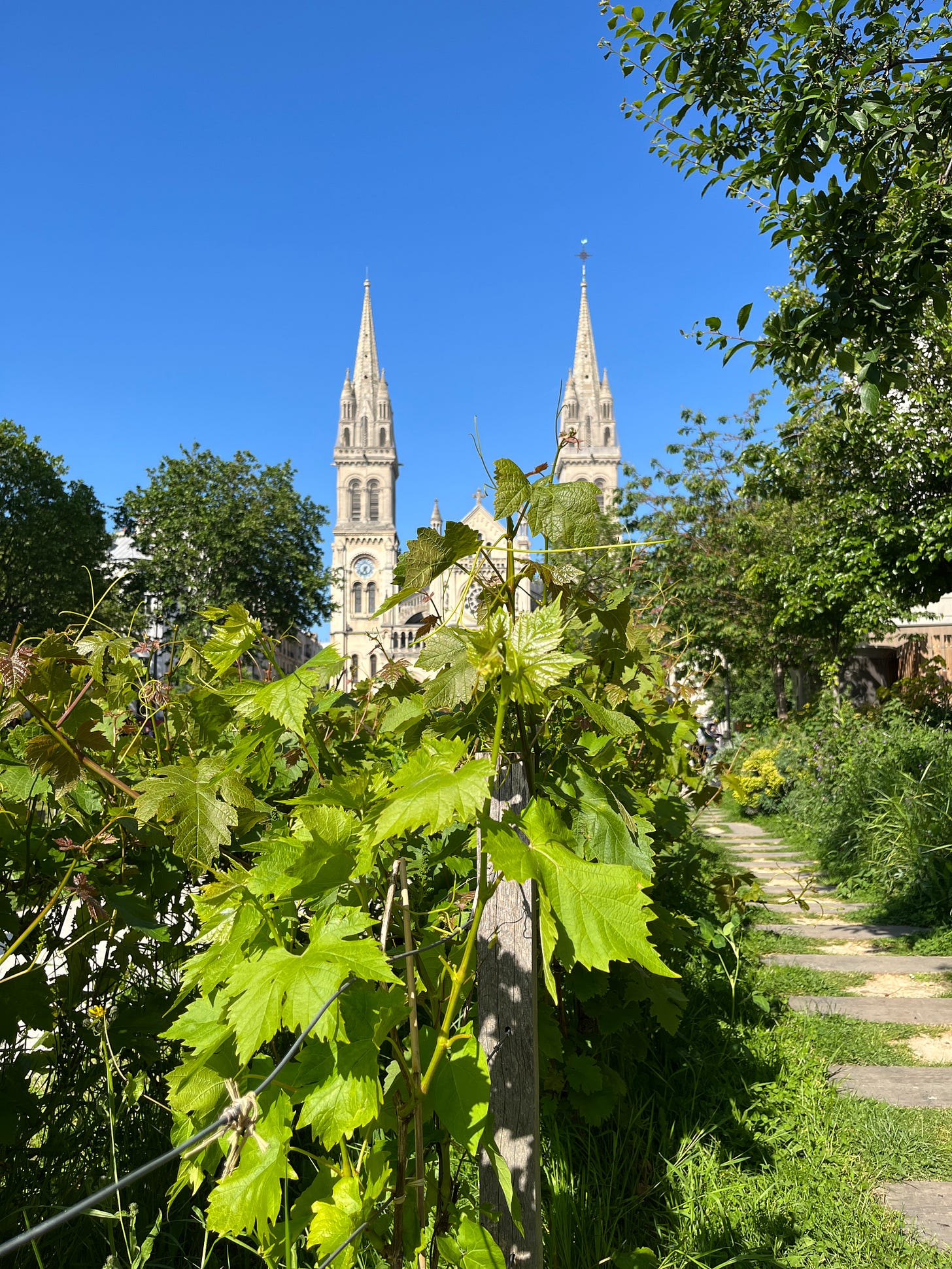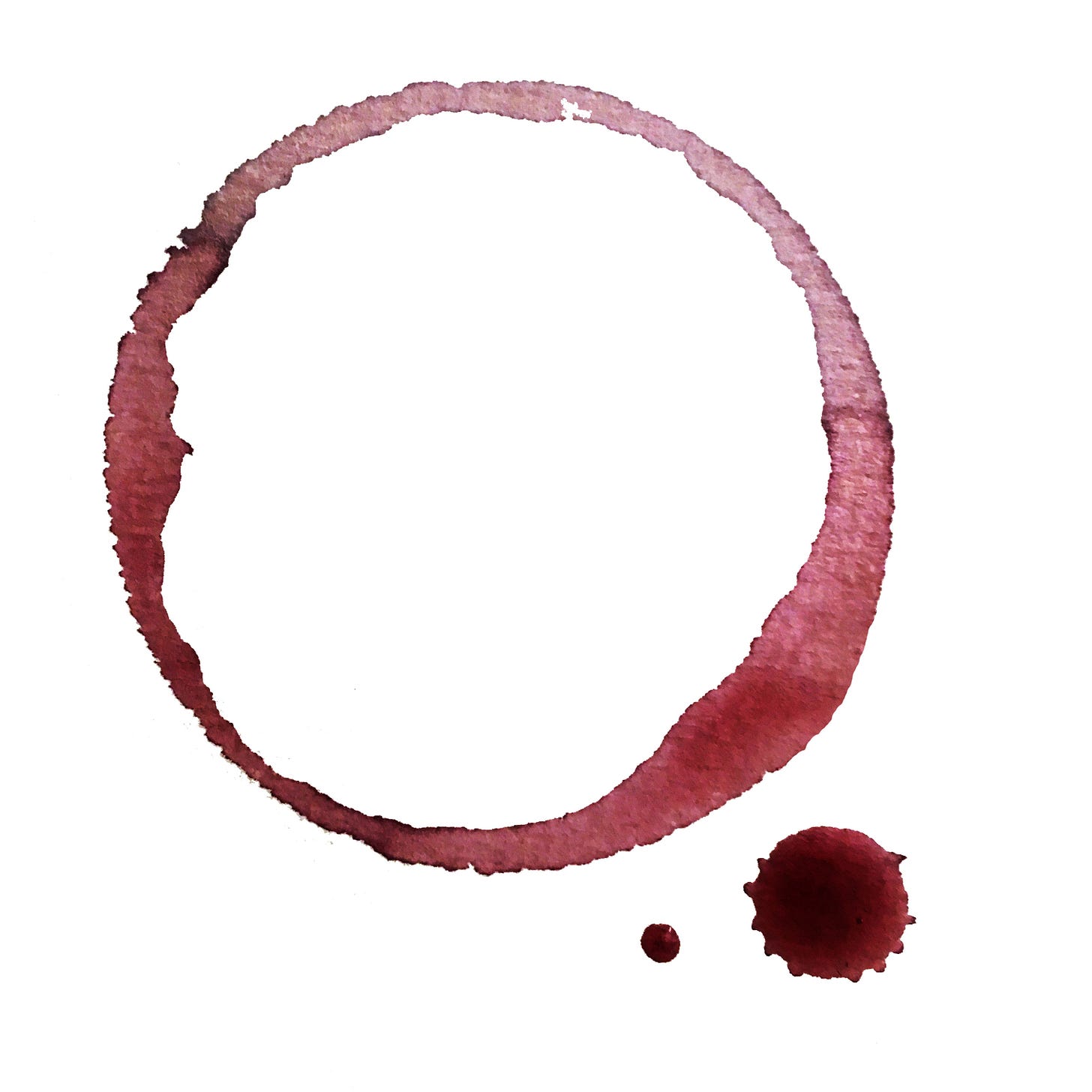The Hidden Vineyards of Paris
Starting the New Year with a sneak peak at the definitive, soon-to-be-published guide to the vineyards of Paris.
To begin, I would like to offer my very best wishes to all for a prosperous, bountiful, peaceful, healthy and happy new year. The road ahead will no doubt have its challenges as “being challenged in life is inevitable, (although) being defeated is optional.” Thankfully there are wine walks to take your mind off life’s pressures and provide a bit of convivial distraction. In the meanwhile, if you’re not in Paris, you can read a bit about the history of the vine in Paris.
A Delicious Valley
Paris and wine. What could be more obvious? And yet there is a hidden story of living vines and living wines that few people ever see. How many are aware that there are currently almost a dozen wine-producing vineyards in Paris, with an additional dozen non-producing vineyards thriving in practically every quarter of the city.
The true story of Paris is wine and, apart from the spiritual uplift it has always provided, wine was also the original economic driver for the city’s growth. During the 12th century the Seine Valley was renowned in Northern Europe and its wines were sold throughout the region, bringing great prosperity.
Marcel Lachiver, in his book Vin, Vigne et Vignerons (Wine, Vines and Winegrowers) says that “everyone agrees that the quality of the soils and the variety of exposures are important elements that explain the success of winegrowing around Paris”[1]. The wines were very highly regarded, especially the whites, because the religious orders that were largely responsible for the cultivation of the vine sought quality over quantity. The wine of Suresnes (a western suburb of Paris), was appreciated as much as the great Burgundies. ‘Noble’ grape varieties such as Pinot de Bourgogne (Pinot Noir) and Gamay for the reds and Fromenteau (another name for Savagnin) for the whites were used most often. The popular wines sold as far away as England, Holland, and Flanders.
Viticulture reached its height in the Île-de-France in terms of both surface area and quality around the time of the first empire between 1804 and 1815 when vine acreage exceeded that of Bordeaux and Burgundy. It is hard to imagine now that under the historic streets of Paris, vineyards flourished in the city’s soil and that in some neighbourhoods hidden vineyards still thrive. These vineyards often produced wines comparable to some of the best of France in both quantity and quality. The vines may be gone (though in some quarters vestiges still exist) but their presence is witnessed by street names such as the rue Beautreillis, rue du Clos, Passage du Clos Bruneau, le Cour St-Emilion, rue du Clos Feuquières, rue de la Goutte d'Or, rue des Morillons, rue de la Pressoir, rue des Vignes, Cité des Vignes, rue Vineuse, and rue des Vignobles.
Roman Origins
‘Vitis vinifera’, the genus of vine that produces the grapes most commonly associated with wine, is a very tenacious and resistant plant that has been cultivated for over 8000 years, its earliest origins for winemaking traced to Georgia in the Caucasus. Vines were present in France in the period of the Gauls in the 6th century BC – they are said to have originated with Greek settlers in the south of France. It was the Romans we have to thank for its wide-scale cultivation from the 1st century BC to the beginning of the medieval period in the 6th century AD. In Roman culture, wine was an integral part of daily life and even viewed as a necessity. In contrast to the medieval French world where wine was pretty much limited to the clergy and the aristocracy (peasants mostly drank cider, ale or perry), wine in Roman society was ubiquitous and drunk by nobles, women, children, and slaves alike. In both instances and more particularly with the Romans, it was mixed with water and considerably less alcoholic than the wines we have today.
As the Roman Empire grew, so did the vine. To supply armies with this daily necessity, vineyards were planted wherever Roman garrisons were stationed and settlements established – as far north as England. Soldiers whose families had a history of wine making were given the responsibility of cultivating these vineyards and making the wine. France proved to be a perfect land and climate for growing grapes. Though there were certainly grape varietals imported from Italy, it is thought that most of the vines were indigenous varietals and hence the ancestors of the grapes grown in those regions today.
The Roman legacy was significant, providing the foundation for the vast viticultural patchwork that is France today. Starting in the southern regions of Provence, the Languedoc and the Southern Rhône, where the wines were undoubtedly similar in character to those one might have found in Italy (intense ‘hot’ red wines made with sun-drenched, fully mature grapes) the legions moved west and north establishing vineyards along the Garonne and the Dordogne (Cahors, Gaillac, Bergerac), which were identified as ‘Bordeaux’ as they were shipped from there, and on to the areas of Cognac, the Auvergne, the Loire, Burgundy and the Jura, the Île-de-France, Champagne and Alsace.
After the Romans left in the 6th century AD, the clergy took over the cultivation of the vine as lands were owned either by the church or by monarchs and nobles. The clergy worked the vines for the glory of God, devoting their lives to the church to make ‘the blood of Christ’ and to finance the economy of daily life and to build temples. In most instances, these institutions amassed extraordinary wealth in the process. Vineyards belonging to the aristocracy and the king were worked by peasants, who derived scant reward in return.
[1] Vins, Vignes et Vignerons en region Parisienne, Marcel Lachiver, P. 21
Wine Walks!
For more information, click on the underlined links:
Clos Montmartre - Paris in Your Glass
Paris' most famous wine producing vineyard
Latin Quarter Unbottled!
An insider's journey to the oldest wine neighbourhood in the city
Wine Your Way Through the Marais
The Marais seen through a wineglass
Saint-Germain-des-Prés
Discover the vinous spirit of medieval Paris
3-Vineyard Cycling Tour
A comprehensive overview of medieval Paris
Paris Bottled!
Short on time? This one’s for you.









